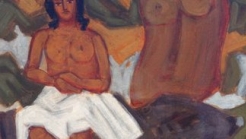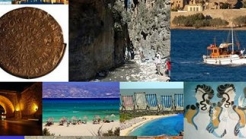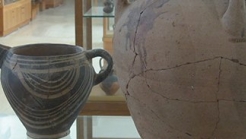

Greece
The exhibits of the museum are very important, and consist of sculptures from Livadeia and Cheronea, ceramics from prehistoric and historic locations around Cheronea, Elateia,coins and weapons from the Tomb of Macedonians and the mass graves of Thebians in Cheronea.
The exhibits of the museum are very important, and consist of sculptures from Livadeia and Cheronea, ceramics from prehistoric and historic locations around Cheronea, Elateia, Orchomenos, Eksarhos and Agious Theodorous of Antikyra, pieces of murals from the Mycenaean era from Orchomenos, coins and weapons from the Tomb of Macedonians and the mass graves of Thebians in Cheronea.
During the last years, the exhibition was enriched with findings from the digs in Orchomenos, Livadeia, Boeotean Kifissos (a large graveyard of the ancient times) and Cheronea (Roman farm houses, tombs from the classic and Hellenistic times).
The Cheronea Archaeological Museum’ construction began at the expense of the Athenian Archaeological Company in 1903, and was completed in 1907. It is located in the east entrance of the city of Cheronea, next to the Leontos tombal monument which was erected by the Thebians on the mass grave of their Sacred Band, who fell during the battle by the same name that took place in 338 BC.
Following the 1981 earthquakes, the building sustained severe damages to its roof and external areas, which were worsened by the bad weather conditions in the 1980’s. The public’s access to the museum was finally prohibited in 1995.


Aims to be a welcoming place for every citizen , a concentration and fruitful conciliation creators, of art lovers and friends, designated development spirit of solidarity, cooperation and solidarity, but also intellectual and aesthetic cultivation, training and entertainment.


An especially unique island, blessed with beautiful beaches, and also with a history depicted through the ages.


The Archaeological Museum Sitia began operating in 1984, one hundred years after the first excavations of the Italian Archaeological School. Largest and richest whole antiquities is considered to be the palace of Zakros were built with many and great findings, some of which are masterpieces of Minoan art.
1039 Ε 6061 01515 00